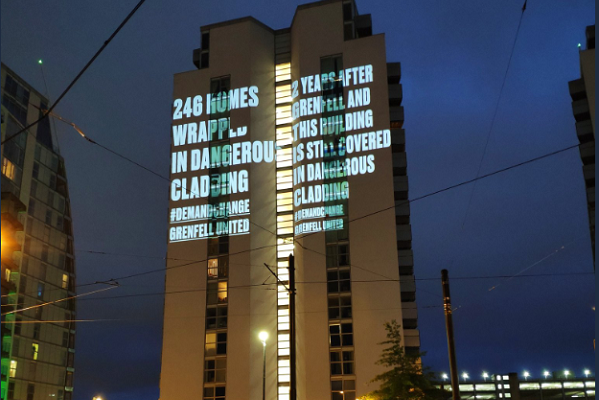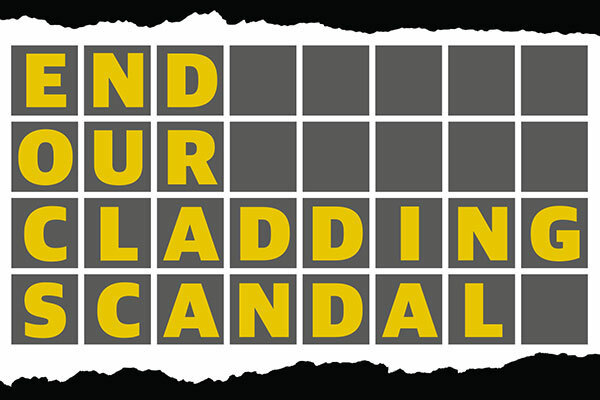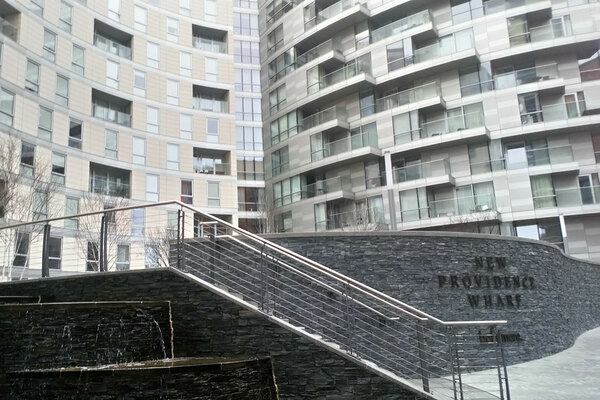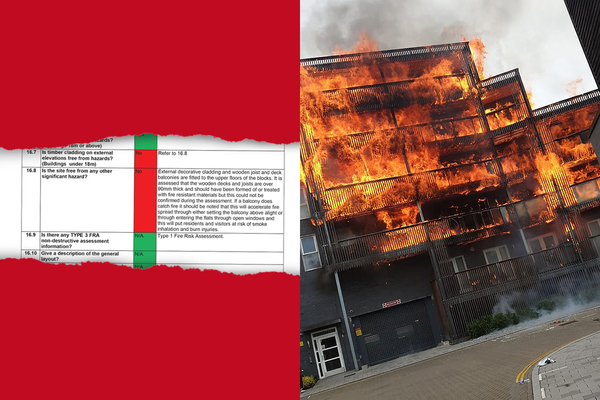You are viewing 1 of your 1 free articles
As a leaseholder in a dangerous building, I have been let down by government and the industry
Despite headline-grabbing announcements, the government has not given us a way out of our fire safety nightmare, writes Catherine Nicholson
The images of Grenfell Tower burning on TV was one of those memorably shocking moments, but what I didn’t realise at the time was how I would be personally affected by it.
I live in a high-rise building in Manchester and following Grenfell, like many buildings across the country, fire safety investigations were completed.
The investigations revealed major failings in the construction of my home, such as the use of different types of combustible cladding, missing cavity barriers, and steel beams that seem to be unprotected by fire-retardant materials.
These are not new problems but ones which have only recently been discovered due to improved awareness of and focus on fire safety.
They are essential requirements that should have been built at the time of construction, under the regulations in force at the time.
Worryingly, similar issues have been found in numerous other buildings nationally, although the full scale and cost of the national problem remains unclear.
So far, we have not been given an explanation as to why the building was constructed in the way that it was.
We have also not had an explanation as to why numerous individuals and companies, such as the project manager, funders’ monitoring surveyor, building contractors, building control, fire safety experts, surveyors and lawyers, had not identified these problems.
Or why apartments have been bought and sold under the assurance that they are safe and built in accordance with regulations, when this is far from reality.
But the crippling bill for the repairs has fallen to us: the leaseholders. We have been let down by a huge range of professionals and we are currently expected to shoulder the burden of correcting a problem that originated before our responsibility started.
The government has made headline-grabbing statements about leaseholders not being responsible for fire safety remediation costs, but has offered no practical solution or legislation to obtain the cost of the work from other sources.
“I feel let down that we are not being provided with support to make our homes safe”
The private sector aluminium composite material (ACM) cladding fund seems to be heavily caveated, thereby diminishing its help. We are only at the start of the process of claiming, but the first hurdle is obtaining original copies of the state aid form. The development where I live has 300 apartments, with some leaseholders living overseas, and we need a form from everyone for our claim.
If we ever achieve this, we can claim for the cost of replacing the ACM. In our case, this is only a relatively small proportion of the required expenditure.
The bigger issues are the cavity barriers and what appears to be little fire protection to the steel framework.
I feel let down that we are not being provided with support to make our homes safe.
We are a group of individuals in a range of situations but, understandably, a significant number of us do not have the money available to pay for the work required.
Current estimates are at an average of £35,000 per apartment to cover remedial work for the building, but I expect this to increase further because the costs to remediate the steel framework have not yet been fully investigated.
Options available to us to raise this money are limited. Property valuations for mortgage purposes are attributing nil value until the problems have been fixed, meaning we cannot raise the money through the mortgage.
Large loans will only add to the financial stress and potentially have a catastrophic effect on people’s lives. Some owners I have spoken to said they may simply have to walk away from their flat given that the potential costs may dwarf any equity they have built up on their home.
In contrast, the developers of the building have recently announced pre-tax profits of hundreds of millions and paid out £200m to its shareholders last year, all while seeming to ignore the serious danger we have been left in.
What do I hope would be a successful outcome from the revelation that there are thousands of homes constructed without appropriate fire safety measures? Mainly, I want my family and the huge number of other people affected by this to live in safe homes and not be lumbered with the burgeoning financial responsibility to rectify a problem that they did not create.
“The developer of the building has recently announced pre-tax profits of hundreds of millions and paid out £200m to its shareholders last year, all while seeming to ignore the serious danger we have been left in”
Beyond that, I want long-term change in the construction, regulation and legal industries to ensure similar problems are not repeated and remain hidden until revealed by a disaster. I want developers to construct buildings responsibly and safely, not to cut corners because of time and financial savings and hiding problems they know will not be checked.
With reference to building control, the ombudsman states that a completion certificate is not a guarantee that building regulations have been met or a guarantee that all works have been done to the required standard.
Yet, once they issue the certificate, solicitors, insurance companies, surveyors and other professionals use it as evidence that the building has been constructed appropriately, in line with the relevant regulations.
I have been amazed by the significance that has been given to a worthless piece of paper and the number of times that gets used as green light to proceed. The ombudsman states that the responsibility for building work primarily rests with those who commission it and those who do the work.
I therefore hope that our developer backs up its repeated statements about being a responsible developer by rectifying a potentially life-threatening mistake that should never have existed in the first place.
Catherine Nicholson, resident and leaseholder in a block with dangerous cladding












